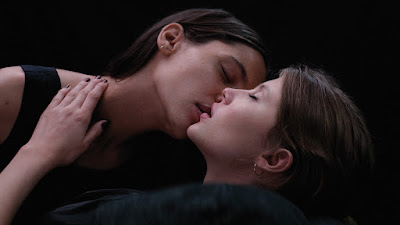FILM REVIEW: Thelma is like a queer Carrie, with exquisite dread and chilling beauty
2017, Norway, directed by Joachim Trier, starring Eili Harboe, Kaya Wilkins, Henrik Rafaelsen and Ellen Dorrit Petersen.
Watch this if you liked: Let The Right One In (2008), Raw (2016)
Rating: A
Of
the rapid rise of gay-themed films being released, the majority feel safe and
comfortable. After the hetero-pleasingly basic Love, Simon, what queer cinema needed was a shake-up. Norwegian
director Joachim Trier’s newest film, after his stunning English-language
feature Louder Than Bombs, may be too
niche and difficult to find to really make an impact, but those who seek it
will be rewarded. For Thelma is one
of the best and most intriguing attempts to find new ways to tell queer
stories. The film uses telekinetic powers as a metaphor to represent the
titular character’s attempt to understand and accept her attraction to another
young woman, Anja.
Any mention of supernatural powers as
metaphor automatically invites comparison to Brian De Palma’s seminal Carrie, especially as this film also shares
an obsession with religious fanaticism and parental control. However, the
thematic meaning behind Thelma’s almost god-like powers, which sees each of her
deepest wishes fulfilled, is much queerer. For her, they represent a way of
overcoming the strict views parents impart and her own related internalised
homophobia. It’s almost too obviously an allegory, with some moments feeling
forced (a snake going down Thelma’s throat is a particularly unsubtle metaphor
for her feelings about sin).
However, the film allows room for a
significant moral complexity. At one point, a character asks Thelma if it’s
possible that Anja doesn’t really love her, that Thelma is just manipulating
her with her gift. If every one of her deepest wishes is granted, how can she
know that the feelings of those she loves are genuine? It’s a challenging and
intriguing question, one that forces us to reconsider the narrative and
Thelma’s position as the protagonist. That she’s asked this by a character
that’s clearly using it against her just adds to the complexity.
From the gasp-inducing opening sequence, the
audience is on edge, feeling a palpable sense of dread, fearful of and for
Thelma. It’s one of the film’s finest tricks, creating a character that is both
unnerving and deeply sympathetic, something it extends to many of its
characters. Each has their own values and it’s hard to see anyone as a pure
villain. Not even her parents come off badly, as we learn the reasons why they
have treated Thelma this way in an eerily beautiful flashback. They clearly
come from the ‘conceal, don’t feel’ school of parenting.
Thelma’s
thematic nuance is matched by its visuals, which manage to turn moments of
horror into subtle beauty, making the most of the chilly Norwegian landscape.
That said, one of the film’s best sequences is set indoors, turning a swimming
pool into a huge, yet claustrophobic hell that ratchets up the tension until
it’s almost unbearable. Another nerve-wracking sequence features
strobe-lighting, a rare use of CGI and a shocking end that leaves a haunting
note.
That Trier’s film ends on an ambiguous, note
perfect grace note that is either romantic or disturbing depending on the
viewer’s interpretation feels wonderfully in keeping for a film of such
chilling beauty and exquisite dread.

Comments
Post a Comment